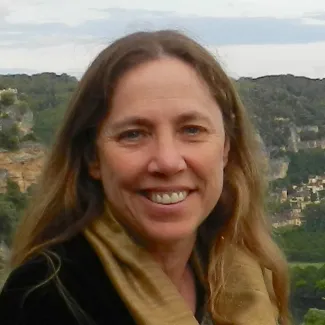Mekonnen, Zelalem A., et al. “Arctic Tundra Shrubification: A Review of Mechanisms and Impacts on Ecosystem Carbon Balance”. Environmental Research Letters, vol. 16, no. 5, 2021, p. 053001, https://doi.org/10.1088/1748-9326/abf28b.
Margaret Torn
First name
Margaret
Last name
Torn
Identity Disambiguation
Affiliation(s)
Open Researcher and Contributor ID (ORCID)
Web of Science
2021
2020
2019
- Grant, Robert F., et al. “Modeling Climate Change Impacts on an Arctic Polygonal Tundra: 2. Changes in Carbon Dioxide and Methane Exchange Depend on Rates of Permafrost Thaw As Affected by Changes in Vegetation and Drainage”. Journal of GeophysicalResearch: Biogeosciences, vol. 124, no. 5, 2019, pp. 1323-41, https://doi.org/10.1029/2018JG004645.
2018
2017
- Grant, Robert F., et al. “Mathematical Modeling of Arctic Polygonal Tundra With Ecosys: 1. Microtopography Determines How Active Layer Depths Respond to Changes in Temperature and Precipitation”. Journal of Geophysical Research: Biogeosciences, vol. 122, no. 12, 2017, pp. 3161-73, https://doi.org/10.1002/2017JG004035.
- Grant, Robert F., et al. “Mathematical Modeling of Arctic Polygonal Tundra With Ecosys: 2. Microtopography Determines How Carbon Dioxide and Methane Exchange Responds to Changes in Temperature and Precipitation”. Journal of Geophysical Research: Biogeosciences, vol. 122, no. 12, 2017, pp. 3174-87, https://doi.org/10.1002/2017JG004037.
2016
2015
- Wainwright, Haruko M., et al. “Identifying Multiscale Zonation and Assessing the Relative Importance of Polygon Geomorphology on Carbon Fluxes in an Arctic Tundra Ecosystem”. Journal of Geophysical Research: Biogeosciences, vol. 120, no. 4, 2015, pp. 788-0, https://doi.org/10.1002/2014JG002799.
- Throckmorton, Heather M., et al. “Pathways and Transformations of Dissolved Methane and Dissolved Inorganic Carbon in Arctic Tundra Watersheds: Evidence from Analysis of Stable Isotopes”. Global Biogeochemical Cycles, vol. 29, no. 11, 2015, pp. 1893-10, https://doi.org/10.1002/2014GB005044.
2014
- Riley, William J., et al. “Long Residence Times of Rapidly Decomposable Soil Organic Matter: Application of a Multi-Phase, Multi-Component, and Vertically Resolved Model (BAMS1) to Soil Carbon Dynamics”. Geoscientific Model Development, vol. 7, no. 4, 2014, pp. 1335-5, https://doi.org/10.5194/gmd-7-1335-2014.


